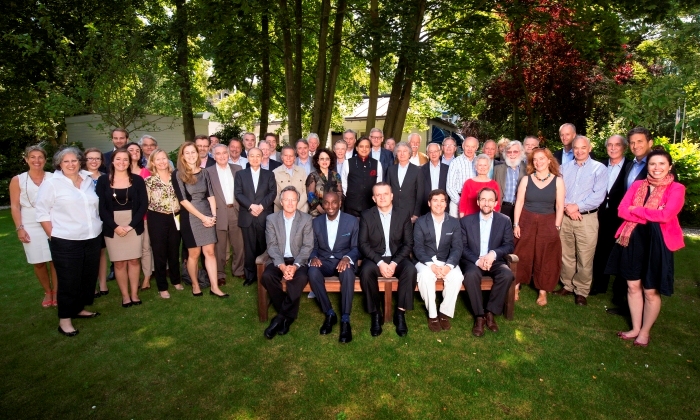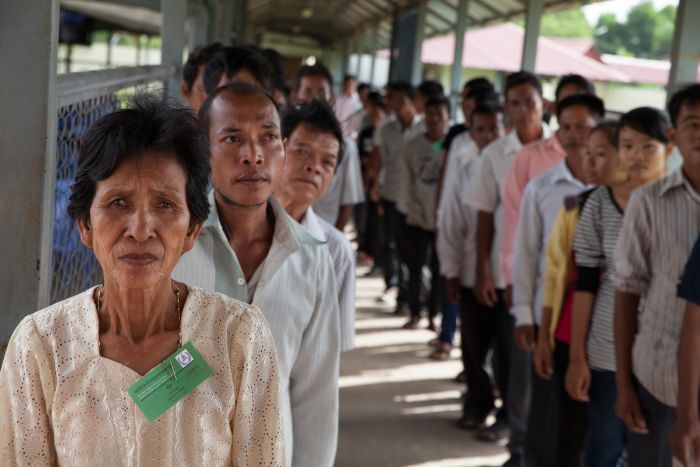Leading decision makers from more than a dozen countries gathered in The Hague from June 29 to July 1, 2015, to examine the failure of the international community to prevent the fall of the United Nations “safe area” of Srebrenica in July 1995. This failure resulted in the largest massacre in Europe since World War II.
The convening of former officials and eyewitnesses from Europe, North America, Asia, and the United Nations coincided with the 20th anniversary of the executions of as many as 8,000 Muslim prisoners by the Bosnian Serb army following their capture of the Srebrenica enclave on July 11, 1995. The International Tribunal for the Former Yugoslavia has ruled that the killings and mass expulsion of Muslims from Serb-controlled territories in eastern Bosnia constituted a genocide under the definition of the 1948 Genocide Convention.
The conference was sponsored by the United States Holocaust Memorial Museum and The Hague Institute for Global Justice, in cooperation with the National Security Archive at George Washington University. It is part of a broader initiative, International Decision Making in the Age of Genocide, that began in 2014 with a conference on the Rwandan genocide and the declassification and public release of thousands of previously secret documents.
Participants in the Srebrenica convening included former special representative of the UN Secretary-General Yasushi Akashi, former European peace negotiator Carl Bildt, former Commander of UN forces in Bosnia General Sir Rupert Smith, Srebrenica survivor Muhamed Duraković, and three former members of the UN Security Council. The wartime Bosnian government was represented by Hasan Muratovic, the minister responsible for relations with the international community, and former Deputy Prime Minister and Foreign Minister Zlatko Lagumdžija.
Watch video interviews with the participants.
“By assembling so many of the key people in the same room, we were able to take a fresh look at international decision making from a variety of different perspectives,” said Cameron Hudson, director of the Museum’s Simon-Skjodt Center for the Prevention of Genocide. “The goals was to identify moments when international action might have made a difference.”
The conference examined the period of March 1993 to July 1995, beginning with the UN Security Council’s establishment of the so-called Srebrenica safe area in an attempt to protect the beleaguered Muslim population of eastern Bosnia. Declassified documents have revealed sharp differences of opinion between the diplomats in New York and leaders of the United Nations Protection Force (UNPROFOR) on the feasibility of the safe area concept and the resources devoted to fulfilling the mission.
“While these events took place 20 years ago, they have a clear modern-day relevance,” said Abiodun Williams, president of The Hague Institute, which hosted the conference. “We are seeing the same debates about the viability of safe areas and the use of air power to protect displaced populations play out in places like Syria and Iraq.”
The working sessions of the conference on June 29 and June 30 were held behind closed doors with the goal of promoting candid conversation. Read the official conference transcripts.
The Srebrenica documentation initiative is led by the National Security Archive, a Washington-based nongovernmental organization that has pushed for the declassification of official documents on subjects ranging from the Cuban missile crisis to the Rwanda genocide. The Archive has published a series of briefing books (external site) that include materials used as the basis for the conference.
“The archival documents allow us to look over the shoulders of the people who struggled with life-and-death decisions during the run-up to Srebrenica,” said Tom Blanton, director of the National Security Archive. “We can get inside the private sessions of the UN Security Council and the heads of decision makers in The Hague, London, Washington, Zagreb, and Sarajevo in a way that was impossible just a few years ago.”
This conference was made possible in part by the generous support of the Sudikoff Family Foundation, which funds the Museum’s Sudikoff Annual Interdisciplinary Seminar on Genocide Prevention, and by the support of the John D. and Catherine T. MacArthur Foundation for the National Security Archive’s genocide documentation efforts.















